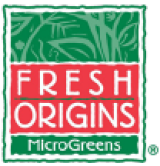


Apple Blossom Begonia Flowers
Estimated Inventory, 50 ct : 0
This item was last sold on : 07/19/25
| Fresh Origins | Homepage |
Description/Taste
Pink Begonia blossoms are small, averaging 2 to 5 centimeters in diameter, and have two broad, larger curved petals and two smaller, slender petals. The flowers grow in spindly bunches, attaching to thin, branching stems with a deep pink color. The papery, delicate petals range in color from pale pink to bright pink and have a yellow center. Pink Begonia blossoms are juicy, fleshy, and tender, with a citrus-like tartness. The flowers may also have a mild, bitter aftertaste and add a pleasant, sour flavor to culinary dishes.
Seasons/Availability
Pink Begonia blossoms are available year-round when commercially cultivated and have a peak blossom season in the summer when grown wild.
Current Facts
Pink Begonia blossoms are harvested from a group of mounding leafy plants commonly known as Wax Begonias. These perennials are botanically classified as Begonia cucullata, previously Begonia semperflorens. Wax Begonias display scalloped oval leaves with a glossy, almost waxy appearance and clusters of showy white to purple blooms. Worldwide, there are over 1,600 different species of begonias. The fleshy-stemmed plants have been cultivated for their pleasing appearance and culinary purposes for centuries, with hundreds of hybridized varieties developed from wild and cultivated blooms. Pink Begonia blossoms are just one of the many edible varieties of begonias, and get their name from their sour taste. Pink Begonia blossoms are favored by chefs for use as a garnish and are incorporated into dishes to add bright colors, delicate textures, and a tart flavor.
Nutritional Value
Pink Begonia blossoms are an excellent source of vitamin C, a nutrient vital to the body’s healing process that supports the formation of blood vessels, cartilage, muscle, and collagen. The flowers contain moderate magnesium levels for nerve function and antioxidants to protect cells from oxidative damage. Pink Begonia blossoms have high levels of oxalic acid, the component that gives the blossoms their tart flavor. Oxalic acid will bind with calcium and can result in kidney stones, so those with kidney sensitivities should not eat large quantities of Pink Begonia blossoms.
Applications
Pink Begonia blossoms are popularly consumed raw, especially as a garnish. They can be tossed into salads or fruit bowls, garnished over seafood and cooked meats, or floated into drinks such as fruit punch, sparkling water, or cocktails. They can also be incorporated into ceviche, sprinkled over soups, or brewed into tea. In addition to savory applications, Pink Begonia blossoms can be used in dessert recipes such as tarts, ice cream, jam and cheese spreads, or cakes. Begonia blossoms are used in sauces that accompany meat and fish in Indonesia and are added to salads in China and Brazil. Pink Begonia blossoms pair well with fennel, tarragon, strawberries, honey, lemon, potatoes, and seafood. The flowers can be left attached to stems and kept in water inside the refrigerator to maintain freshness. If removed from the branches, they should be used immediately for best quality and flavor and will keep 1 to 2 days when stored in a sealed container in the refrigerator.
Ethnic/Cultural Info
Begonias are commonly used in Asia as an everyday potherb. The flowers are traditionally mixed into sauces, tossed into salads, and used to flavor seafood. The flowers are also used in traditional medicine in teas to soothe sore throats. While begonias have been used for centuries in Asia and Europe, they have recently increased in popularity in the United States as an edible garnish. High-end chefs use Pink Begonia blossoms for their bright colors, tart flavor, and soft, delicate texture to elevate the dish and create a memorable dining experience.
Geography/History
Begonias are native to regions of South America, Central America, Asia, and South Africa, with Wax Begonias being native to Brazil’s Atlantic coastal forest. The plants were prepared by indigenous tribes in this region similarly to spinach and were medicinally used as a diuretic. The plants were then shared via trade routes to Japan and Europe in the 17th and 18th centuries. Begonias arrived in North America in the 1800s. Today many varieties of begonias are cultivated on a broad commercial scale in China, Holland, Israel, and the United Kingdom. The flowers are also grown as an ornamental variety and are highly consumed from backyard gardens in Brazil, Mexico, the United States, Myanmar, Indonesia, the Philippines, Japan, India, and China. Pink Begonia blossoms can be harvested from home gardens or local farms or sourced from specialty growers like Fresh Origins, a southern California farm specializing in micro and petite greens, tiny veggies, and edible flowers.
Featured Restaurants
Restaurants currently purchasing this product as an ingredient for their menu.
| Shoreside Support Boat | San Diego CA | 704-277-7929 |
| Cal A Vie | Vista CA | 760-945-2055 |
| Bar Same Same (Bar) | Carlsbad CA | 760-470-9143 |
| DoubleTree By Hilton San Diego | San Diego CA | 619-881-6900 |
| Claytons Bakery & Bistro | Coronado CA | 619-435-5425 |
| Kettner Exchange Bar | San Diego CA | 909-915-9877 |
| Inn at Rancho Santa Fe (Bar) | Rancho Santa Fe CA | 858-381-8289 |
| Hilton La Jolla Torrey Pines | La Jolla CA | 858-450-4581 |
| Salt & Whiskey | San Diego CA | 619-544-1886 |
| Andrew Spurgin | San Diego CA | 619-277-6020 |
| Espadin | Temecula California | 951-383-5585 |
| Top of the Market | San Diego CA | 619-234-4867 |
| Poseidon on the Beach | Del Mar CA | 858-755-9345 |
Recipe Ideas
Recipes that include Apple Blossom Begonia Flowers. One




 Learn More...
Learn More...
